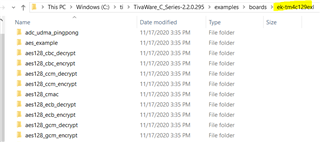Tool/software:
Hi Team
I have requirement to Firmware upgrade the the application binary using ethernet bootloader directly in RAM
The Ethernet bootloader will be residing in flash , but the application should be directly need to be flashed in RAM using the Bootloader ,
Is there any example code for running the binary directly in RAM instead of FLASH
My requirement is to load the application from RAM when ever in system Bootup, Like each time on power up through Ethernet bootloader I need to directly firmware(application) download to RAM and boot from RAM not from Flash
My second question is there any code or example projects for Ethernet packet encryption and decryption
Please respond ASAP


